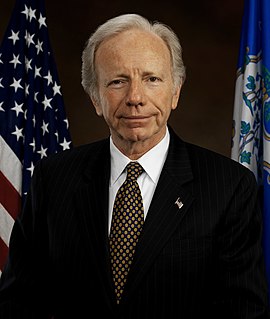| Number | Recommendation | Specific Action |
| 1 | Institutionalize biodefense in the Office of the Vice President of the United States | Empower the Vice President with jurisdiction and authority over biodefense responsibilities. |
| 2 | Establish a Biodefense Coordination Council at the White House, led by the Vice President | The Vice President should lead the primary designees and the members as a coalition that will prioritize needed activities, designate responsibilities, and ensure accountability. |
| 3 | Develop, implement, and update a comprehensive national biodefense strategy | The Vice President should develop a comprehensive national biodefense strategy and implementation plan. |
| 4 | Unify biodefense budgeting | Congress should mandate the development of a unified budget that defines how the entire biodefense enterprise is funded. |
| 5 | Determine and establish a clear congressional agenda to ensure national biodefense | At the start of each congressional session, Senate and House leadership should direct each committee with biodefense jurisdiction to convene for an in-depth classified biological threat briefing. |
| 6 | Improve management of the biological intelligence enterprise | The Director of National Intelligence should address the biological threat in the same way that other issues have been handled that cut across multiple intelligence agencies. This includes creating a national intelligence manager for biological threats, making the biological weapons programs a discrete intelligence topic, addressing bystanders, and distributing assessments. |
| 7 | Integrate animal health and One Health approaches into biodefense strategies | The White House should lead all relevant agencies to a new level of understanding, planning, and operating with respect to biodefense that includes an animal health and, more broadly, a One Health mindset. The executive branch should also develop a nationally notifiable animal disease system and prioritize emerging as well as reemerging infectious diseases. |
| 8 | Prioritize and align investments in medical countermeasures among all federal stakeholders | The Vice President should ensure that Public Health Emergency Medical Countermeasures Enterprise (PHEMCE) priorities guide NIH biodefense research investments. The Vice President should also ensure funding allocations that address biological agents are met and require a biodefense spending plan from the National Institute of Allergy and Infectious Diseases. |
| 9 | Better support and informed decisions based on biological attribution | The Vice President should direct the Secretary of State, Secretary of Defense, Secretary of Homeland Security, the Attorney General, and the DNI to establish and formalize this apparatus. The FBI should also take charge of the national Bioforensics Analysis Center. |
| 10 | Establish a national environmental decontamination and remediation capacity | The Vice President should ensure the Federal Emergency Management Agency is included in interagency efforts to determine policy on biological attacks. Congress should place the EPA in charge of environmental decontamination and remediation efforts after accidental releases and biological attacks. And both the Vice President and Congress should delegate studies of those exposed to disease-causing agents. |
| 11 | Implement an integrated national biosurveillance capability | The plan must identify information required by decision makers (federal, state, local, territorial, tribal, private sector) to manage a biological event. |
| 12 | Empower non-federal entities to become equal biosurveillance partners | The Secretary of Homeland Security should create an interagency biosurveillance planning committee the nexus for active collaboration with non-federal government and non-governmental partners. |
| 13 | Optimize the National Biosurveillance Integration System (NBIS) | The National Security Council should immediately examine NBIS to determine whether expenditures have yielded sufficient amounts of useful information to decision makers beyond the Department of Homeland Security. The NSC should also convene data owners and other stakeholders to evaluate incentive options and determine which are most viable for data and information sharing. |
| 14 | Improve surveillance of and planning for animal and zoonotic outbreaks | Congress should increase opportunities for animal health data collection and optimize funding for the National Animal Health Laboratory Network. The CDC and FEMA should then develop guidance for states, localities, territories, and tribes to handle companion animal infections in the event of a major zoonotic disease outbreak. |
| 15 | Provide emergency service providers with the resources they need to keep themselves and their families safe | The Secretary of Homeland Security must ensure that emergency service providers have access to anthrax vaccines and extend the program to meet other threats. The CDC, FDA and ASPR should preposition medkits with emergency service providers and their families. And the Secretary of Health and Human Services should establish reasonable personal protective equipment guidelines and requirements in advance of a biological event. |
| 16 | Redouble efforts to share information with state, local, territorial, and tribal partners | The government should strengthen the Joint Counterterrorism Assessment Team, local police intelligence units and provide technical assistance to fusion centers to provide biological information and intelligence. |
| 17 | Fund the Public Health Emergency Preparedness cooperative agreement at no less than authorized levels | Congress should appropriate the Public Health Emergency Preparedness funding to authorized levels or the President's request, whichever is higher. |
| 18 | Establish and utilize a standard process to develop and issue clinical infection control guidance for biological events | Congress should standardize the development of clinical infection control guidelines before biological events occur. The Secretary of Health and Human Services and the Secretary of Labor should also Institute a process for obtaining and incorporating feedback regarding clinical infection control guidelines during biological events as well as require training based on these guidelines. |
| 19 | Minimize redirection of Hospital Preparedness Program (HPP) funds | Congress should amend the Public Health Service Act to require that no less than 97 percent of appropriated HPP funds go directly to HPP grantees. Congress should also regularly assess the program. |
| 20 | Provide the financial incentives hospitals need to prepare for biological events | The government should adopt a disaster preparedness portfolio that includes the Conditions of Participation, Interpretive Guidance, measures development for inclusion within value-based purchasing, and innovation projects. Congress should also link Centers for Medicare and Medicaid Services incentives and reimbursement to new accreditation standards. |
| 21 | Establish a biodefense hospital system | The Secretary of Health and Human Services should establish a stratified system of hospitals with increasing levels of capability to treat patients affected by bioterrorism and other events involving highly pathogenic infectious diseases. The Administrator of Centers for Medicare and Medicaid Services should develop new standards to accredit hospitals and provide funding accordingly. |
| 22 | Develop and implement a Medical Countermeasure (MCM) Response Framework | Together with non-federal partners, the ASPR, the Director of the CDC, and the Administrator of FEMA should identify requirements and capacities needed to achieve successful distribution and dispensing of MCM from the Strategic National Stockpile as well as from local caches. |
| 23 | Allow for forward deployment of Strategic National Stockpile assets | The Director of the CDC should determine the necessary assessment, logistical, and funding requirements to forward deploy Strategic National Stockpile assets. |
| 24 | Harden pathogen and advanced biotechnology information from cyber attacks | The Vice President should develop and implement a security strategy for stored pathogen data and cyber-threat information-sharing mechanisms for the pathogen and advanced biotechnology communities. In turn, Federal departments and agencies should include federally-supported pathogen research projects in the revised procurement model under development. |
| 25 | Renew U.S. leadership of the Biological and Toxin Weapons Convention (BWC) | The government should continue to strengthen implementation of the BWC where U.S. support is unequivocal, set U.S. goals for the BWC and determine the conditions necessary to achieve them, develop three actionable recommendations for BWC verification, and establish better biological weapons sentencing guidelines in statute. |
| 26 | Implement military-civilian collaboration for biodefense | The government should conduct a review of military-civilian collaborative efforts, mandate military-civilian collaboration on biodefense (including research regarding force protection), clarify parameters for military support to civilian authorities in response to a domestic biological attack, and update and implement military biodefense doctrine. |
| 27 | Prioritize innovation over incrementalism in medical countermeasure development | The government should prioritize innovation and funding for medical countermeasures at agencies with biodefense responsibilities, identify at least five promising novel technologies that could ultimately be applied to MCM development for material threats, revolutionize development of medical countermeasures for emerging infectious diseases with pandemic potential, and establish an antigen bank. |
| 28 | Fully prioritize, fund, and incentivize the medical countermeasure enterprise | The government should fund the medical countermeasure enterprise to no less than authorized levels, re-establish multi-year biodefense funding for medical countermeasure procurement, address prioritization and funding for influenza preparedness, and improve the plan for incentivizing the private sector and academia. |
| 29 | Reform Biomedical Advanced Research and Development Authority contracting | Contracting authority should be the exclusive responsibility of the Biomedical Advanced Research and Development Authority (BARDA). In addition, BARDA should prioritize the use of OTA and consider any other appropriate flexible contracting authorities for BioShield. Congress should then eliminate the Office of Management and Budget review of BioShield procurements. |
| 30 | Incentivize development of rapid point-of-care diagnostics | The Director of BARDA should determine the suite of rapid diagnostics that are needed for biological agents determined to be material threats and emerging infectious diseases. |
| 31 | Develop a 21st Century-worthy environmental detection system | Congress, through its appropriations to DHS and DOD, should fund an advanced environmental detection system capable of rapid agent characterization and confirmation. The Secretary of Homeland Security should also replace BioWatch Generation 1 and 2 detectors within five years. |
| 32 | Review and overhaul the Select Agent Program | Congress should direct the National Science Advisory Board for Biosecurity to undertake a systematic, evidence-based assessment and overhaul of the Select Agent Program. |
| 33 | Lead the way toward establishing a functional and agile global public health response apparatus | The Secretary of State should convene human and animal health leaders from throughout the world to evaluate current mechanisms and develop a strategy and implementation plan for global public health response. |















